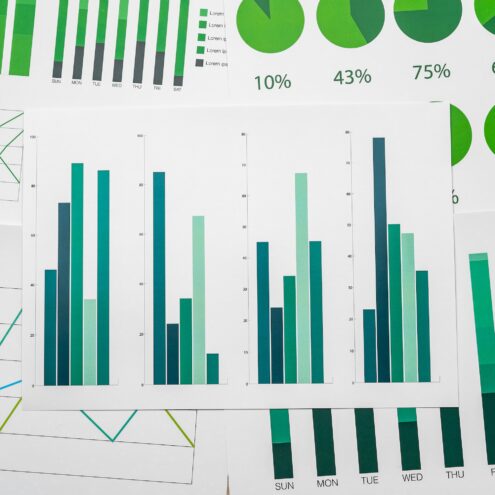Herniated disc neck

A herniated disc in the neck refers to a herniated disc in the cervical spine. The cervical spine consists of seven cervical vertebrae with disks, cushions, between the vertebrae that help to increase mobility between the vertebrae and also have a shock-absorbing ability.
Herniated discs can affect the whole spine, but are most common in the lumbar region, followed by the neck. A herniated disc in the neck is an injury to a disc somewhere along the cervical spine. Herniated discs are most common in the lower part of the cervical spine, between the sixth and seventh cervical vertebrae (C6/C7).
A disk is made up of a fibrous collagen sheath surrounding a soft, jelly-like core. Discs are thus made up of a fascia structure and contain a large amount of water. The water content of disks decreases with age and they become drier and more brittle, making them more prone to cracking in the outer shell. The soft inner core can then bulge to varying degrees, resulting in a hernia. As the nucleus bulges, it may press on the nerve root that runs between the vertebral bodies. The spinal cord, which carries information to and from the brain and various parts of the body, runs in a canal through the vertebrae. In a cavity between the vertebrae, a nerve root extends to each side (right and left). A nerve root is thus a collection of nerve fibres that carry signals to and from the spinal cord and a body part.
As well as being caused by weakening and age degeneration, a hernia can be caused by repeated overloading or misloading or by an acute trauma.
Symptoms of a herniated disc in the neck
The symptoms of a herniated disc in the neck are usually pain in the neck with pain radiating into the shoulder and shoulder and into the hand. The arm and hand may be numb and the fingers may sting.
Muscle weakness can also occur although it is not common.
Often, the symptoms of a herniated disc come on gradually over several weeks, but they can also come on suddenly and acutely. Depending on the size of the hernia and how much it presses on and irritates a nerve root, symptoms will vary in severity.
What can I do myself in case of a herniated disc in the neck?
Movement is important and helps the body heal. Avoid sitting still with your head bent forward. Vary your working position and take breaks with movement.
It is important to practice good posture so that the back and neck are evenly loaded. To help with posture, a stabilizing posture vest can be used, combined with a neck collar to use for periods to relieve the neck.
Exercise for balance and mobility throughout the body, not direct strength. Various exercises to strengthen stabilizing back and abdominal muscles are important to do daily. No heavy exertion but strength training for core muscles with balance exercises so that the small stabilizers of the back are strengthened. It is important to stretch the hip flexors as they are often short and cause problems.
Do relaxation exercises combined with deep breathing. Lie on your back with your legs bent 90° at the hips and knees (on a stool of a reasonable height). Arms out from the body at a 45° angle with palms up. Breathe deeply through your nose. Press your lower back into the floor. Lie like this for 10 minutes and feel your back sinking towards the floor. Use a special neck pillow if it feels good.
To help your body heal, you can take supplements of hydrolyzed collagen, in larger doses, preferably 15 grams per day divided three times. Combine with some vitamin C.
Get help from a Fascia Clinic. It can ease the pain and help you with long-term treatment. You will be helped to rebalance your body so that the weight on your vertebrae and disks is more evenly distributed, reducing the risk of more herniated disks in the future.
Preventing herniated discs in the neck
Herniated discs in the neck are usually the result of normal ageing, as the discs and the body in general become less hydrated, lose elasticity and generally become more fragile. It is therefore important to try to keep yourself fit and as mobile as possible.
To maintain your body, you can take supplements of hydrolyzed collagen, in larger doses, preferably 5-10 grams per day divided three times. Combine with some vitamin C. It supports the body’s production of collagen.
Do relaxation exercises combined with deep breathing. Lie on your back with your legs bent 90° at the hips and knees (on a stool of a reasonable height). Arms out from the body at a 45° angle with palms up. Breathe deeply through your nose. Press your lower back into the floor. Lie like this for 10 minutes and feel your back sinking towards the floor. Use a special neck pillow if it feels good.
Get regular help from a Fascia Clinic to help you with long-term preventive treatment. You will be helped to rebalance your body so that the load on your vertebrae and disks is more evenly distributed, reducing the risk of herniated disks in the future.
When and where should I seek treatment for a herniated disc in my neck?
It’s never a good idea to procrastinate and walk in pain. It creates more new problems as the body tries to compensate to escape the pain.
A FasciaClinic can help you with body balancing so that your whole body becomes more balanced. The treatment is pleasant and provides relaxation and relief for the whole body.
Exercises for a herniated disc in the neck
Mobility and relaxation are important to keep circulation and flow in the body. Simple light movement exercises, train balance and for the whole back. Posture is important for neck relief. Practice balancing books on your head.
Do relaxation exercises combined with deep breathing. Lie on your back with your legs bent 90° at the hips and knees (on a stool of a reasonable height). Arms out from the body at a 45° angle with palms up. Breathe deeply through your nose. Press your lower back into the floor. Lie like this for 10 minutes and feel your back sinking towards the floor.
Use a special neck pillow if it feels good.
Aids for herniated discs in the neck
Use a posture vest to help with a stable posture. Neck collars and a special neck pillow can also be used.
 Search
Search


































